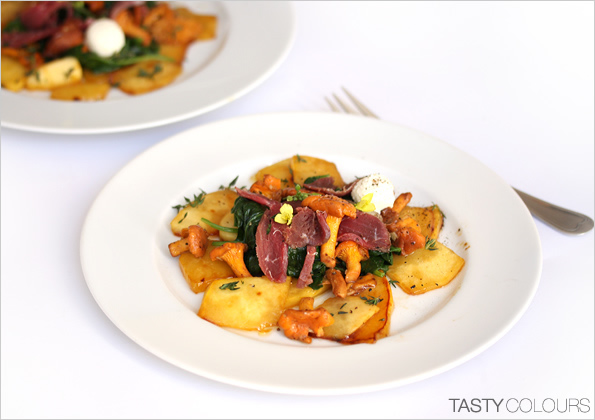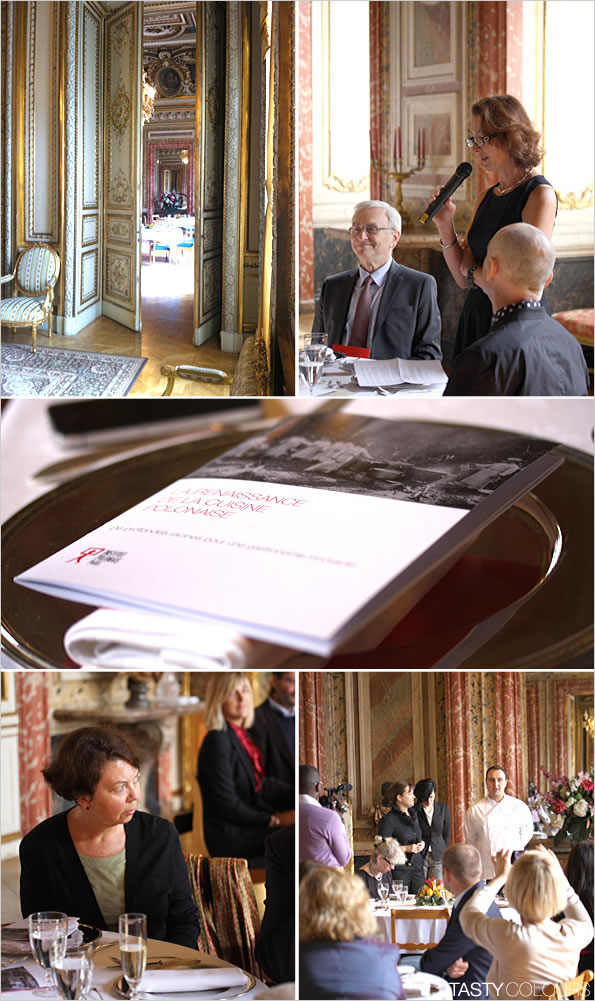Summer in
Poland is gone. We are close to November which means that the peak of the goose
season approaches. As you might remember it, last year I wrote a bit about the excellent
Polish oat goose. I also mentioned the action
promoting the Polish oat goose – "Gęsina na św.
Marcina" – (goose
tastes best on St. Martin’s fest”). This year, the event will last for
more than two weeks: from 8th November to 1st December 2013. Selected
restaurants, including top ones, have goose specialties on their menu. If you
are in Poland at that time, I strongly recommend to visit one of the
restaurants listed HERE.
Goose meat
is also promoted by the authorities of the Kujawsko-Pomorskie Region. The region and a local touristic
organization have created the "Goose Culinary Route" (Gęsinowy Szlak Kulinarny)
which is financed, inter alia, by the Polish Ministry of Sports and Tourism.
The region specializes in goose breading, and goose meat produced in this area
is of a very good quality. You may then taste the classic baked goose, but also
the famous "półgęsek" (an ancient specialty made from boneless goose
breast with the skin on, cured and slowly smoked) or "okrasa" (a kind
of spread which you can use as a topping for tartines). The official opening of
the Goose Culinary Route is planned for the 7th of November 2013:
Below is a list of restaurants which are recommended by a special committee
and, as a result, are listed on this culinary route:
- Restaurant "Weranda", Hotel Bohema, Bydgoszcz
- Restaurant "1921", Hotel Pod Orłem, Bydgoszcz
- Restaurant "Za piecem", Bydgoszcz
- "Regionalna Warzelnia Piwa", Bydgoszcz
- Hotelu Filmar Restaurant, Toruń
- Hotel 1231 Restaurant, Toruń
- Hotel Heban Restaurant, Toruń
- Jan Olbracht Browar Staromiejski, Toruń
- Sfera by Sebastian Krauzowicz Restaurant, Hotelu Copernicus, Toruń
- Ostromecka Restaurant, Ostromecko
- Gęsia Dolina Restaurant, Ślesin
- Karczma Rzym, Pawłówek
- Karczma Borowiacka, Bysław
- Vistula Hotel Restaurant, Świecie
- Karczma Chełmińska, Chełmno
- Hotel Młyn&SPA Restaurant, Włocławek
- Pałac Bursztynowy Restaurant, Włocławek
I still
have one "półgęsek" in my fridge which I bought in Gruczno as it is practically impossible
to buy it in any shop in Kraków (the distribution of local products in Poland
is really bad and this is due to various reasons). Some restaurants here serve
it occasionally. If I had my own house with a garden and a smokehouse, I would
make this "półgęsek" on my own – the recipe itself is not
complicated. I also brought from Gruczno an excellent buckwheat honey made by
Mr. Wnuk from Lniano. His buckwheat honey won the first place at the Festival
(it was also served during our Parisian event by chef Baron. It goes very well with sautéed
pumpkin.
Warm
Salad with Smoked Goose Breast, Chanterelles, Pumpkin and Spinach
(sałata
na ciepło z półgęskiem, kurkami, dynią i szpinakiem)
Ingredients
(serves 2-3)
200 g chanterelles
100 g
smoked goose breast (półgęsek), thinly sliced (may be replaced with
magret de canard)
1 small
bunch fresh spinach leaves
200 g pumpkin,
cut into thin slices
Buckwheat
honey of good
quality
1 table
spoon, lemon juice
50 g fresh goat
cheese
1 garlic
clove, thinly chopped
Butter
Olive oil
or cold pressed colza oil
Arugula
flowers (optional)
Fresh thyme
Salt
Pepper
Prepare the
mushrooms: Using a brush, delicately clean
mushrooms from leftovers of the forest. Scratch the stems to remove soil. Rinse
the mushrooms delicately under cold water. In a saucepan, slowly melt butter
over minimum heat (do not stir). Remove from heat and skim the foam off the
surface. Spoon the butter into a bowl. Discard the milky sediment. In a hot
large frying pan, heat butter, add mushrooms (they should not be crowded, so
they can grill evenly) and fry them on each side for a couple of minutes, until
nicely grilled (depending on the thickness) and until they release their juices
and absorb them back in (when frying over high heat, they should not release a
lot of juice). Add garlic, fry for about one more minute. Salt and pepper.
Prepare the spinach: clean and wash your spinach, spin it. In a hot
large frying pan, heat butter with a bit of olive oil, add spinach and fry it
until soft. Salt at the end. At the same time, in another frying pan, melt some
butter, add pumpkin slices, fry for a couple of minutes, then add honey with
lemon. Reduce the heat and let the pumpkin simmer until nicely grilled and
caramelized.
Prepare your salad: roll tiny cheese balls from your goat cheese. Heat
the mushrooms. Put the caramelized pumpkin onto your plates. Put the spinach,
chanterelles, cheese balls and the goose meat on top. Top generously with fresh
thyme leaves, salt and pepper, as well as some olive oil or colza oil if you
want.
Bon appétit !













